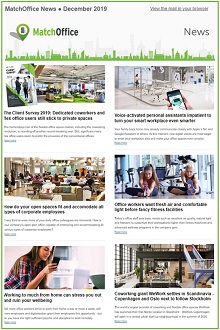
How do your open spaces fit and accommodate all types of corporate employees

The open-plan office arose and evolved to promote employee interaction, innovation, creativity and efficiency for the company's further development.
Subsequently, the activity-based office followed up by recognizing that the modern well-functioning office environments need to design and furnish their workspaces according to the different kinds of tasks and activities of the working day.
Today, the time is ripe for the activity-based concepts to dig deeper and accept that companies achieve their targets and results through individual and differentiated work processes of the various types of employees.
While an extroverted employee associates a collaborative presentation with a large round table in the open space, the introverted employee combines the same type of corporate performance with the office pod, a colleague, and their laptops.
Challenging environments
"Open office environments can feel incredibly challenging for introverts. They can work in these environments - I have had to - but most often, I isolated myself behind a set of headphones to tell colleagues that I´m busy.
Vast office landscapes can benefit from calm areas and small strategic hideaways that offer employees mental breathing and workspaces. Another solution may also be to allow your introverted colleague to work often outside the office," suggests Glen Cathey, HR director, blogger, etc. at Randstad Saint Petersburg.
 Too much noise and jumble in open office environments can seem overwhelming, stress- and painful to the introverted employee. |
"On the surface, the theme of introversion may not be a top priority for your company and your diversity and inclusion efforts. But it should have.
A workplace where everyone feels comfortable and motivated to bring their authentic self into play sharing their unique thoughts, contributes definitely to the corporate employee engagement and commitment - and ultimately makes your business stronger," Glen Cathey adds.
Activity-based solutions
The open-plan offices´ often high level of small talk, disruptive traffic and visual distractions can be extremely overwhelming for the introverted, sensitive office worker who can quickly feel over-stimulated, pressured and stressed to act socially and extroverted.
The introverted types of employees usually work best, most creatively and productively in spaces where they can find peace, overview and focus on their current job without distractions and interruptions.
 Introverted employees work best, most creatively and productively in limited spaces where they can find peace of mind to focus on theircurrent work tasks - for example, in a convenient office pod. |
Modern activity-based interior designs and concepts can meet the needs of these employees by furnishing with mobile partitions, calm areas and zones, quiet rooms, corners, and pods, where introverted co-workers can secure their work peace.
It should be in the interest of every employer to make sure that all employees work most productively. It is the employer's task and responsibility to ensure an office environment that is capable of accommodating and making all kinds of talents feel good and thrive to the maximum extent.
Disadvantage
"Just a few would disagree that incorporating quiet spaces into the workplace is a good idea. Still, those designs are often viewed as a luxury serving a limited part of the employees - even though it usually turns out that a significant portion of the workforce, as a matter of fact, do make use of these quiet spaces.
Take a look around your office: Basically, how well do they support your various types of employees? Also those with special needs?” Change Manager at the Planning Design Research Corporation in Houston, Amy Pipe urges.
"If you can't emphasize more than two ways your office environment supports these different personalities, consider up to half of your colleagues are working at a disadvantage - and consider how this thing might impact your business success ..." ●
 Read more:
Read more:
Pdrcorp.com: Introverted or Extroverted? Or Ambivert?
Bureauwork.com: Designing an Office for Both Introverts and Extroverts
Business.linkedin.com: Why and How Introversion Should be a Part of Diversity and Inclusion
Robinpowered.com: How to Accommodate Four Different Types of Employees in the Workplace



